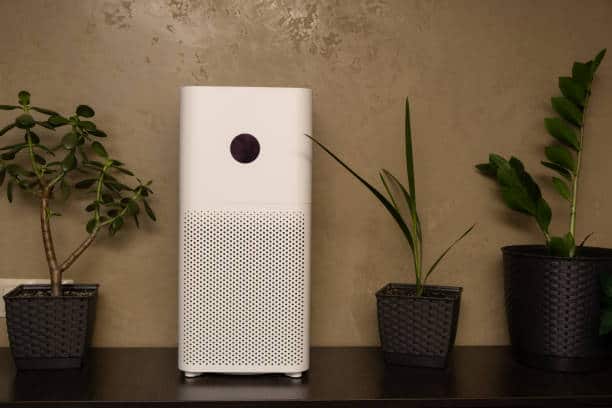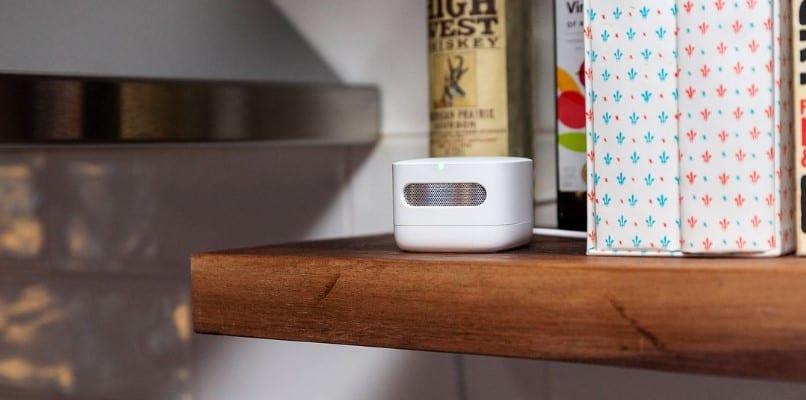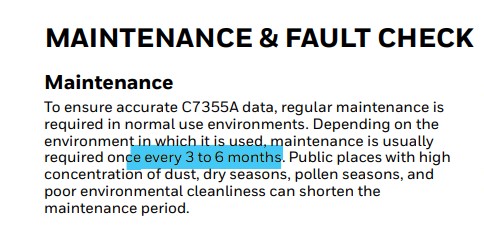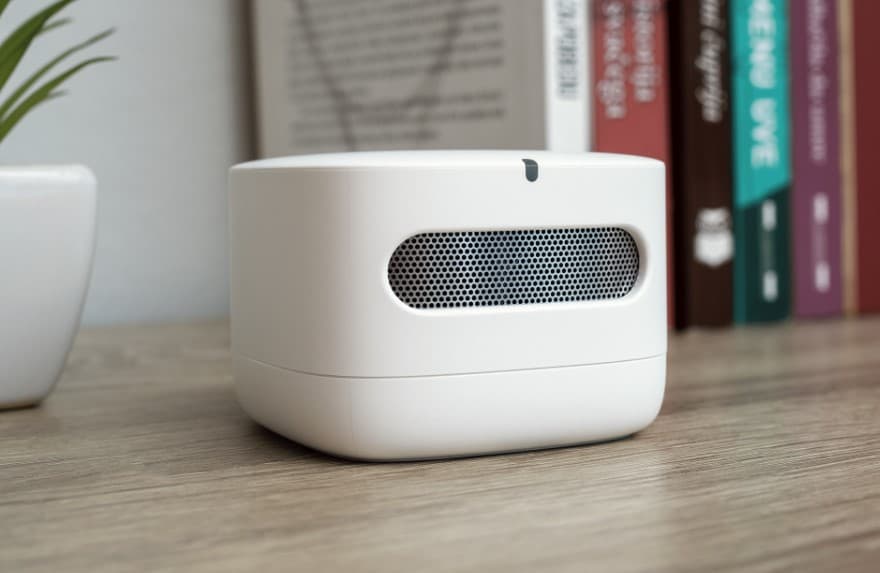Indoor air quality (IAQ) has a significant impact on our health, well-being, and comfort, especially considering the amount of time we spend indoors.
But are you curious about the accuracy of your indoor air quality monitor? Imagine relying on it for peace of mind, only to wonder if it’s truly measuring pollutants accurately.
However, to ensure accurate and reliable measurements, indoor air quality monitors may require calibration.
In this article, we’ll dive into the importance of calibration for indoor air quality monitors, exploring the reasons behind it and its implications for maintaining healthy indoor environments.
Do Indoor Air Quality Monitors Require Calibration?
Indoor air quality monitors generally require periodic calibration to ensure accurate and reliable measurements. Calibration helps maintain the accuracy of sensors and instruments over time, accounting for factors such as sensor drift and environmental changes.
Sensor Drift: Over time, the performance of sensors used in indoor air quality monitors may drift or deviate from their original calibration due to factors such as environmental conditions, aging, and exposure to contaminants.
A 2017 study conducted by the University of Hong Kong emphasized the importance of calibrating IAQ monitors and addressed the challenge of sensor drift in low-cost electrochemical NO2 sensors by developing an innovative auto-correction technique.
emphasized the importance of calibrating IAQ monitors and addressed the challenge of sensor drift in low-cost electrochemical NO2 sensors by developing an innovative auto-correction technique.
Sensor drift can lead to inaccuracies in measurements, affecting the reliability of the IAQ data collected.
in measurements, affecting the reliability of the IAQ data collected.

Environmental Variability: Indoor environments are dynamic, with fluctuations in temperature, humidity, and pollutant levels.
These environmental changes can impact the performance of sensors and affect the accuracy of indoor air quality measurements.
Regular calibration helps account for environmental variability and ensures consistent monitoring accuracy.
and ensures consistent monitoring accuracy.
Long-Term Stability: Continuous operation and exposure to various environmental conditions can affect the long-term stability of sensors in indoor air quality monitors.
Calibration helps maintain sensor stability and extends the lifespan of the monitoring equipment, ensuring reliable performance over time.
Compliance Requirements: In certain applications, such as environmental monitoring in commercial buildings, industrial facilities, or healthcare settings, regulatory standards or guidelines may require periodic calibration of indoor air quality monitors to ensure compliance with accuracy requirements.
Calibration certificates may also be necessary for quality assurance and audit purposes.
Methods of Calibration:
Indoor air quality monitors can be calibrated using different methods:
Factory Calibration: All indoor air quality monitors are calibrated at the factory before being shipped to customers.
Factory calibration ensures that the sensors meet specified accuracy standards and perform within acceptable limits. However, environmental factors and operational conditions may still require periodic recalibration.

Field Calibration: Field calibration involves adjusting the sensor readings of an indoor air quality monitor on-site to account for environmental conditions and ensure accuracy.
This generally involves using calibration gases , reference standards, or comparative measurements with calibrated instruments.
, reference standards, or comparative measurements with calibrated instruments.
These field calibration activities can be performed by trained technicians, or you can do them through automated calibration procedures provided by the manufacturer.
Laboratory Calibration: In some cases, indoor air quality monitors may need to be sent to a specialized laboratory for calibration by trained professionals.
Laboratory calibration ensures the highest level of accuracy and traceability to national or international standards.
This method is often used for critical applications or when high-precision measurements are required.
Impacts of Uncalibrated Indoor Air Quality Monitors:
Uncalibrated indoor air quality monitors can have several consequences:
Inaccurate Measurements: Uncalibrated indoor air quality monitors provide inaccurate or unreliable measurements, leading to incorrect assessments of indoor air quality levels.
This can compromise your health and safety and hinder efforts to address IAQ issues effectively.
Misinterpretation of Data: Inaccurate IAQ measurements resulting from uncalibrated monitors may lead to misinterpretation of data and inappropriate decision-making regarding IAQ management strategies.
Without reliable monitoring data, building occupants and managers may not be able to identify and mitigate indoor air quality problems promptly.
Compliance Risks: In applications where regulatory compliance is required, the use of uncalibrated indoor air quality monitors may pose compliance risks.
Failure to meet accuracy requirements or provide valid calibration certificates can result in regulatory violations, fines, or legal consequences.
Increased Maintenance Costs: Uncalibrated indoor air quality monitors may require more frequent maintenance, repairs, or replacement due to performance issues or sensor failures.
This can increase the overall cost of IAQ monitoring and management for building owners and facility managers.
Importance of Regular Calibration:
Regular calibration is essential for ensuring the accuracy, reliability, and effectiveness of indoor air quality monitoring.
By calibrating indoor air quality monitors at scheduled intervals or in response to environmental changes or sensor drift, you can:
or sensor drift, you can:
Maintain Accuracy: Calibration helps ensure that indoor air quality monitors provide accurate and reliable measurements, enabling informed decision-making and effective IAQ management.
Enhance Confidence: Calibrated indoor air quality monitors instill confidence in the accuracy and reliability of the monitoring data collected, facilitating trust among building occupants, stakeholders, and regulatory authorities.

Optimize Performance: Properly calibrated indoor air quality monitors optimize the performance of IAQ monitoring systems, enhancing their effectiveness in identifying and mitigating indoor air quality issues.
Ensure Compliance: Regular calibration helps ensure that indoor air quality monitors meet regulatory requirements and compliance standards, reducing the risk of violations, penalties, or legal liabilities.
Extend Lifespan: Calibration helps maintain the long-term stability and reliability of indoor air quality monitors, extending their lifespan and reducing the need for frequent maintenance or replacement.
How often should indoor air quality monitors be calibrated?
Indoor air quality monitors should be calibrated annually or as per manufacturer’s guidelines to ensure accuracy. Additional calibration may be needed if the monitor’s performance is inconsistent or after significant environmental changes.
Calibration should generally be performed at regular intervals, typically annually or biannually, or whenever sensor drift or accuracy issues are suspected.
I have created a table to estimate how often AIQ monitors are calibrated based on the sensors they use.
| Sensor Type | Recommended Calibration Frequency | Calibration Methods |
|---|---|---|
| Electrochemical Gas Sensors | Every 6 to 12 months | Span calibration: Adjusting the sensor output to match known gas concentrations or Calibration using certified gas cylinders, |
| Optical Particulate Sensors | Every 12 to 24 months | Zero calibration: Adjusting the sensor baseline to account for ambient particle levels or Calibration using reference aerosol standards |
| Photoionization Detectors (PID) | Every 6 to 12 months | Dynamic or multi-point calibration: Adjusting sensor response across a range of target compounds or Calibration using standard gas mixtures |
| Ionization Chambers | Every 12 to 24 months | Checking ionization chamber response to known radiation levels and Calibration using calibrated radiation sources |
| Metal Oxide Semiconductor (MOS) Sensors | Every 6 to 12 months | Exposure to clean air or zero gas for baseline adjustment or Calibration using test gases containing target analytes |
Here are some general guidelines to consider for calibrating IAQ monitors:
Manufacturer’s Recommendations: Follow the calibration schedule recommended by the manufacturer of your indoor air quality monitor.
Manufacturers typically provide guidelines on calibration intervals based on factors such as sensor stability, drift characteristics, environmental conditions, and usage patterns.
Refer to the user manual or technical specifications of your monitor for specific calibration instructions and intervals.

Regular Maintenance Schedule: Incorporate indoor air quality monitor calibration into your regular maintenance schedule to ensure accurate and reliable measurements over time.
Monitor performance may degrade gradually due to factors such as sensor ageing, environmental exposure, contamination, and mechanical wear.
Regular calibration helps detect and correct any deviations from the expected measurement accuracy.

Environmental Conditions: Consider the environmental conditions in which the indoor air quality monitor is deployed when determining calibration frequency.
Harsh or extreme environmental conditions, such as temperature fluctuations, humidity levels, exposure to contaminants, and airborne particles, may accelerate sensor drift or degradation, necessitating more frequent calibration.
Critical Applications: For critical applications where precise and consistent measurements are essential for health, safety, compliance, or regulatory requirements, calibrate indoor air quality monitors more frequently to ensure compliance and minimize risks.
Critical applications may include healthcare facilities, laboratories, schools, cleanrooms.
Sensor Stability and Drift: Monitor sensor stability and drift characteristics over time to assess when calibration is necessary.
Some sensors may exhibit minimal drift and maintain calibration for extended periods, while others may require more frequent calibration to maintain accuracy.
Perform periodic sensor performance checks and calibration verification tests to evaluate measurement accuracy and determine if calibration is needed.
Usage Patterns: Consider the usage patterns and operational history of the indoor air quality monitor when determining calibration frequency.
Monitors used continuously or in demanding environments may require more frequent calibration compared to monitors used intermittently or in a controlled environment.
Monitor usage, exposure to contaminants, operational hours, and maintenance practices influence calibration requirements.
Calibration Verification: In addition to periodic calibration, perform calibration verification or functional checks on the indoor air quality monitor to confirm measurement accuracy and reliability.
Calibration verification involves comparing monitor readings to reference standards or certified calibration gases to ensure that measurements fall within acceptable tolerances.
Regular calibration and maintenance are essential for ensuring accurate and dependable measurements, minimizing measurement errors, and maximizing the effectiveness of indoor air quality monitoring efforts.
If in doubt, consult with the manufacturer or a qualified calibration service provider for guidance on calibration intervals and procedures tailored to your specific monitoring needs.
FAQs:
Can I calibrate indoor air quality monitors myself?
Calibration of indoor air quality monitors may require specialized equipment, calibration standards, and technical expertise.
While some monitors offer user-friendly calibration procedures or automated calibration features, complex calibration tasks may be best left to trained professionals or certified calibration laboratories to ensure accuracy and traceability to standards.
What are the consequences of using uncalibrated indoor air quality monitors?
Using uncalibrated indoor air quality monitors can lead to inaccurate measurements, misinterpretation of data, compliance risks, increased maintenance costs, and compromised IAQ management.
Calibration is essential for maintaining the accuracy and reliability of indoor air quality monitoring systems and ensuring the health and safety of building occupants.
How accurate are indoor air quality monitors?
The accuracy of indoor air quality monitors varies depending on factors such as sensor quality, calibration, and environmental conditions.
While some monitors provide precise measurements for common pollutants like particulate matter, VOCs, and carbon dioxide, others may have limitations or require periodic calibration checks to maintain accuracy.
Choosing high-quality monitors and following calibration guidelines ensures accurate and reliable readings for effective indoor air quality monitoring.
Conclusion:
Indoor air quality monitors play a crucial role in assessing and monitoring indoor environmental conditions, providing valuable insights into potential pollutants and IAQ parameters.
Calibration is essential for ensuring the accuracy, reliability, and effectiveness of indoor air quality monitoring systems.
By calibrating indoor air quality monitors regularly and as needed, building occupants and managers can maintain confidence in the accuracy of the monitoring data collected, optimize IAQ management strategies, and create healthier indoor environments for all.

